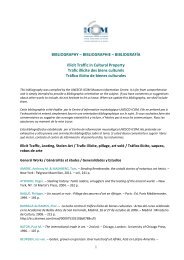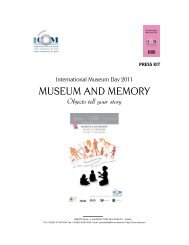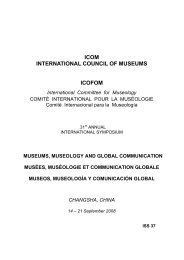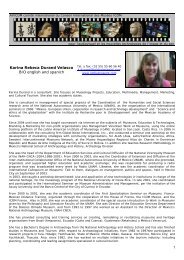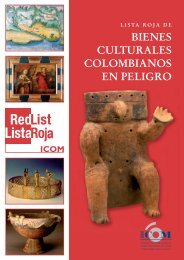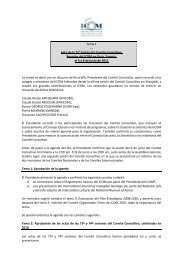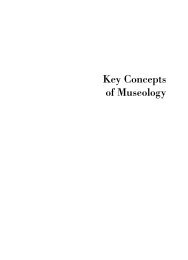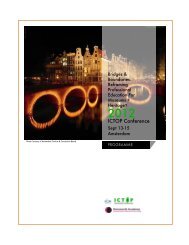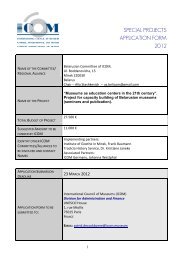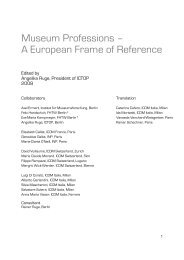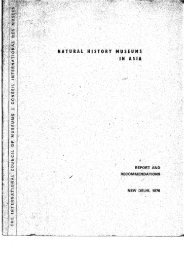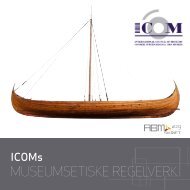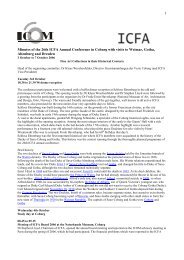ISS 25 (1995).pdf - The International Council of Museums
ISS 25 (1995).pdf - The International Council of Museums
ISS 25 (1995).pdf - The International Council of Museums
You also want an ePaper? Increase the reach of your titles
YUMPU automatically turns print PDFs into web optimized ePapers that Google loves.
Heritage, Museum, Territory and Community<br />
Nelly Decarolis - Argentina<br />
"Simple things do not exist,<br />
only simplified things do."<br />
G. 8achelard<br />
All coherent cultural policies should try to rescue the deep sense <strong>of</strong><br />
development which takes into consideration the capacity <strong>of</strong> each human group to<br />
be informed, to learn and to communicate its experiences, showing the evolution<br />
<strong>of</strong> values and ideologies as well as the various lines <strong>of</strong> thought which have<br />
prevailed at different times in history.<br />
It is essential for mankind's creative activity and for the complete<br />
development <strong>of</strong> the individual and <strong>of</strong> society as a whole that there exists a wide<br />
dissemination <strong>of</strong> ideas and knowledge. Nowadays, we live in a globalized world<br />
where most <strong>of</strong> the interests have become international, sustained by blocs <strong>of</strong><br />
nations and transnational corporations, but the global economy badly needs<br />
qualified workers. <strong>The</strong> fact <strong>of</strong> recognizing distinctive spiritual, intellectual and<br />
material features which characterize other social groups permits to distinguish<br />
values, make options and even feel ethically committed.<br />
<strong>The</strong> museum, which is closely related to a physical, social and cultural<br />
space, gathers different expressions <strong>of</strong> culture and has an enormous potential to<br />
implement actions which join towards improving mankind's quality <strong>of</strong> life in<br />
relation to his natural and cultural environment. It is no longer limited to the static<br />
presentation <strong>of</strong> traces <strong>of</strong> a prestigious past, but also to a past which made up<br />
daily life and which, committed to the present, is projected into the future.<br />
Its role is to recreate reality in an authentic, integral manner through its<br />
different expressions; to present and develop the community's cultural forms<br />
which have historically remained in oblivion; to accept the coexistence <strong>of</strong> ethnic<br />
groups <strong>of</strong> the same origin, sometimes with overlapping cultures; to help in the<br />
development <strong>of</strong> regional cultures; to respect the rights <strong>of</strong> mankind within an<br />
interdisciplinary framework and to understand the continuity and changes which<br />
take place in the cultural sphere. <strong>The</strong>refore, it is a valuable instrument to achieve<br />
an integral outlook <strong>of</strong> the contents <strong>of</strong> material and immaterial testimonies which<br />
are mankind's cultural and natural heritage and abstractly gathers the plurality<br />
and uncertainty <strong>of</strong> our nations, which are going through a process <strong>of</strong> quick<br />
transformation.<br />
37



